Civic Center Victory Garden
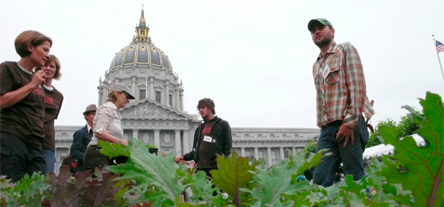
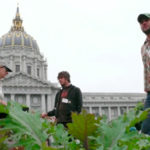

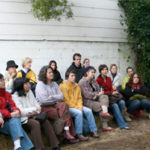
Education Outside (formerly San Francisco Green Schoolyard Alliance)

Education Outside (formerly San Francisco Green Schoolyard Alliance)
2014 - $8,000 Corps for Education Outside Program
2011 - $5,000 Conference Support
2009 - $12,000 Matching Grant for Gardening Educators
2008 - $5,000 Conference Support
2007 - $10,000 General Support
Corps for Education Outside program
Corps for Education Outside program is an innovative new program which is transforming San Francisco’s public schools into centers of hands-on environmental science learning and biodiversity. Corps members transform school gardens into lush, living laboratories, teaching engaging, hands-on lessons that encompass not only science but also sustainability, healthy living, gardening, and cooking. The curriculum used focuses primarily on science as well as English language arts and math.
San Francisco Green Schoolyard Alliance
The San Francisco Green Schoolyard Alliance (SFGSA) is a coalition of Bay Area civic organizations whose work supports schoolyard transformations from ordinary asphalt yards into ecologically rich green spaces for learning and play. SFGSA works to ensure that these emerging vibrant landscapes reflect a school’s local ecology and meet the school’s curricular goals. SFGSA members offer a wide variety of resources that can help school communities create and sustain green schoolyards. They advocate for school yard greening at district, city, and state levels; provide professional development for teachers and parents; secure horticultural supplies and other resources for schools; and maintain a website and hotline for advice and troubleshooting needs.
Education Outside (formerly San Francisco Green Schoolyard Alliance)
2014 - $8,000 Corps for Education Outside Program
2011 - $5,000 Conference Support
2009 - $12,000 Matching Grant for Gardening Educators
2008 - $5,000 Conference Support
2007 - $10,000 General Support
Corps for Education Outside program
Corps for Education Outside program is an innovative new program which is transforming San Francisco’s public schools into centers of hands-on environmental science learning and biodiversity. Corps members transform school gardens into lush, living laboratories, teaching engaging, hands-on lessons that encompass not only science but also sustainability, healthy living, gardening, and cooking. The curriculum used focuses primarily on science as well as English language arts and math.
San Francisco Green Schoolyard Alliance
The San Francisco Green Schoolyard Alliance (SFGSA) is a coalition of Bay Area civic organizations whose work supports schoolyard transformations from ordinary asphalt yards into ecologically rich green spaces for learning and play. SFGSA works to ensure that these emerging vibrant landscapes reflect a school’s local ecology and meet the school’s curricular goals. SFGSA members offer a wide variety of resources that can help school communities create and sustain green schoolyards. They advocate for school yard greening at district, city, and state levels; provide professional development for teachers and parents; secure horticultural supplies and other resources for schools; and maintain a website and hotline for advice and troubleshooting needs.
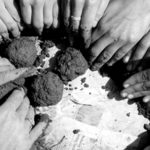

Garden for the Environment
2009 - $10,000 Green House Capital Campaign
2008 - $10,000 General Support
2007 - $10,000 General Support
Garden for the Environment (GFE) maintains a nationally acclaimed one-acre urban demonstration garden and offers environmental education programs about organic gardening, urban compost systems and sustainable food systems. Since its founding in 1990, the garden has operated as a demonstration site for small-scale urban ecological food production, organic gardening and low water-use landscaping.
Today, GFE’s programs include four central educational elements; a three month intensive Gardening and Composting Educator Training program, monthly Compost Education workshops conducted at the garden and community gardens throughout San Francisco, the Resource Efficient Landscape Education series, and the School Education program offered in partnership with San Francisco Unified School District and San Francisco’s Department of the Environment.
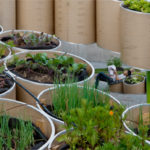
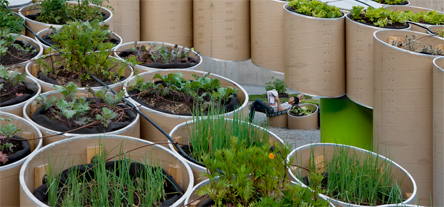
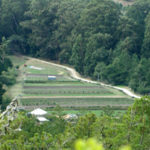

Pie Ranch
2019 - $15,000 General Support
2018 - $15,000 Climate Beneficial Farming at Año Nuevo
2016 - $10,000 General Support
2015 - $10,000 General Support
2010 - $10,000 Capital Campaign
2009 - $10,000 Capital Campaign
2008 - $10,000 Capital Campaign
2007 - $15,000 General Support
PIE RANCH'S MISSION IS TO CULTIVATE A HEALTHY AND JUST FOOD SYSTEM FROM SEED TO TABLE THROUGH FOOD EDUCATION, FARMER TRAINING, AND REGIONAL PARTNERSHIPS.
Pie Ranch works with Bay Area youth and the public via hands-on programming to foster awareness about where food originates, to gain insight into the issues farmworkers face and to understand the benefits of climate-smart farming. Apprentices train to prepare for their own careers in local agriculture by living on site and participating in every aspect of a working farm. Pie Ranch works with partners like the Amah Mutsun, the San Mateo Food Systems Alliance, Puente and others where interests intersect to advocate for a more equitable food system and a healthier planet.
In March of 2020, programming at the farm halted due to COVID-19. Seeking a way to be of use to the Greater Bay Area while regular programming was in abeyance, the Directors crafted a Farm Fresh Food Relief Program that utilized Pie Ranch’s program staff to aggregate, pack and distribute fresh produce to already marginalized communities suffering additional hardship from the virus’ economic impact. To date, this ongoing weekly program has served over 20,000 families with healthy, nutritious food.
August brought the CZU fire to Pie Ranch and to southern San Mateo county. Several Pie team members lost their homes while the farm’s historic house (the heart of Pie Ranch, home to its apprentices for over a decade and site of the Pie admin offices), its greenhouse, and countless trees fell to the blaze.
The extended Pie Family, including the Seed Fund rallied to support Pie Ranch’s ongoing efforts to recover from the twin catastrophes of the fire and assist with the organization’s effort to ameliorate the effects COVID-19. Seed Fund assistance ensures Pie’s program team has the resources to reach and teach youth and the public with online videos, creating socially-distanced curriculum at school gardens and implementing these same types of activities for small pods from partner schools and organizations at the farm.
The Emerging Farmers’ program lives on in a different iteration at neighboring Cascade Ranch , a climate - resilient regenerator farm that seeks to create wealth and equitable building opportunities for early stage farmers that have traditionally been excluded from land ownership. Land, mentorship, equipment access, and business planning are just some of the resources Pie Ranch funnels towards participants in this innovative program with the help of donors like the Seed Fund.
Pie’s Farmstand was able to stay open as an essential business providing this isolated community with farm fresh produce and in addition, a source of revenue for the farm during a time when other income streams have dried up.
Pie Ranch’s continued efforts in regional advocacy work took on a new significance this year with COVID exacerbating the fissures in the ailing food system and then climate change, drought and fires threatening the local Bay Area agri-system like never before. Pie’s advocacy efforts, partially supported by the Seed Fund, towards crafting a more sustainable Coastside is integral to the viability of our agriculture: Pie puts forth the vision of a more localized food infrastructure as described in the Local Food and Farm Bill, and this will help create a more just and planet-friendly food system.
 Rebecca Solnit
2008 Fellow
Rebecca Solnit is a writer and activist living in San Francisco. She has written on a variety of subjects including the environment, politics, place, and art. Solnit has worked on environmental and human rights campaigns since the 1980s, notably with the Western Shoshone Defense Project in the early 1990s, as described in her book Savage Dreams,and with antiwar activists throughout the Bush era.Solnit has also followed and participated in various revolutions worldwide, including Tiananmen Square, the Zapatista Army of National Liberation, and the Velvet Revolution.Solnit is the author of thirteen books as well as essays in numerous museum catalogues and anthologies. Her books include Infinite City: A San Francisco Atlas, a book of 22 maps and nearly 30 collaborators; A Paradise Built in Hell: The Extraordinary Communities that Arise in Disaster; Storming the Gates of Paradise; A Field Guide to Getting Lost; Hope in the Dark: Untold Histories, Wild Possibilities; Wanderlust: A History of Walking; As Eve Said to the Serpent: On Landscape, Gender and Art; and River of Shadows, Eadweard Muybridge and the Technological Wild West, for which she received a Guggenheim fellowship, the National Book Critics Circle Award in criticism, and the Lannan Literary Award.She has worked with climate change, Native American land rights, antinuclear, human rights, antiwar and other issues as an activist and journalist.
rebeccasolnit.net
Rebecca Solnit
2008 Fellow
Rebecca Solnit is a writer and activist living in San Francisco. She has written on a variety of subjects including the environment, politics, place, and art. Solnit has worked on environmental and human rights campaigns since the 1980s, notably with the Western Shoshone Defense Project in the early 1990s, as described in her book Savage Dreams,and with antiwar activists throughout the Bush era.Solnit has also followed and participated in various revolutions worldwide, including Tiananmen Square, the Zapatista Army of National Liberation, and the Velvet Revolution.Solnit is the author of thirteen books as well as essays in numerous museum catalogues and anthologies. Her books include Infinite City: A San Francisco Atlas, a book of 22 maps and nearly 30 collaborators; A Paradise Built in Hell: The Extraordinary Communities that Arise in Disaster; Storming the Gates of Paradise; A Field Guide to Getting Lost; Hope in the Dark: Untold Histories, Wild Possibilities; Wanderlust: A History of Walking; As Eve Said to the Serpent: On Landscape, Gender and Art; and River of Shadows, Eadweard Muybridge and the Technological Wild West, for which she received a Guggenheim fellowship, the National Book Critics Circle Award in criticism, and the Lannan Literary Award.She has worked with climate change, Native American land rights, antinuclear, human rights, antiwar and other issues as an activist and journalist.
rebeccasolnit.net
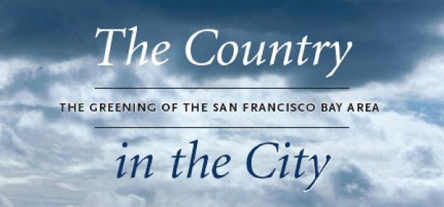 Richard A. Walker 2008 FellowRichard A. Walker is professor of geography and chair of the California Studies Center at the University of California, Berkeley. His research is focused on economic geography, regional development; capitalism and politics; cities and urbanism; resources and environment; California; class and race.
He recently published a book on the history of California’s agricultural system, The Conquest of Bread: 150 Years of Agribusiness in California, which tells the story of how capitalism developed the California countryside into the leading agrarian production complex in the United States. Professor Walker's most recent book concerns the creation of the San Francisco Bay Area greenbelt and the local environmental movement - The Country in the City: The Greening of the San Francisco Bay Area (University of Washington Press, 2007) narrates the many stories of land preservation, saving the bay, and fighting toxics that have made him a global bastion of environmentalism. His next book, tentatively titled City at Bay: The Making of the San Francisco-Oakland Metropolis, will recount the making of urban landscape of the Bay Area.
geography.berkeley.edu/richard-walker
Richard A. Walker 2008 FellowRichard A. Walker is professor of geography and chair of the California Studies Center at the University of California, Berkeley. His research is focused on economic geography, regional development; capitalism and politics; cities and urbanism; resources and environment; California; class and race.
He recently published a book on the history of California’s agricultural system, The Conquest of Bread: 150 Years of Agribusiness in California, which tells the story of how capitalism developed the California countryside into the leading agrarian production complex in the United States. Professor Walker's most recent book concerns the creation of the San Francisco Bay Area greenbelt and the local environmental movement - The Country in the City: The Greening of the San Francisco Bay Area (University of Washington Press, 2007) narrates the many stories of land preservation, saving the bay, and fighting toxics that have made him a global bastion of environmentalism. His next book, tentatively titled City at Bay: The Making of the San Francisco-Oakland Metropolis, will recount the making of urban landscape of the Bay Area.
geography.berkeley.edu/richard-walker
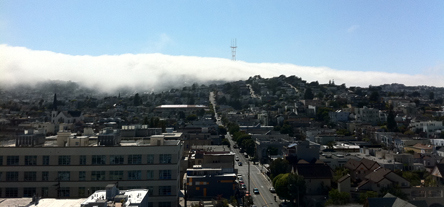 Sam Green
2008 Fellow
A renowned documentary film maker, Sam Green points his camera at a broad range of subjects-from a legendary rainbow-wig sign holder, to a intensive overview of the radical protest group “Weather Underground”. The Seed Fund supported his film project, Fog City, which used a hotline and local call-ins to find and record breathtaking moments of fog in the bay area. Co-directed by Andy Black, Fog Cityhas been shown at SFMoMA and other local venues. Sam Green currently teaches film and video at San Francisco Art Institute.
samgreen.to
Sam Green
2008 Fellow
A renowned documentary film maker, Sam Green points his camera at a broad range of subjects-from a legendary rainbow-wig sign holder, to a intensive overview of the radical protest group “Weather Underground”. The Seed Fund supported his film project, Fog City, which used a hotline and local call-ins to find and record breathtaking moments of fog in the bay area. Co-directed by Andy Black, Fog Cityhas been shown at SFMoMA and other local venues. Sam Green currently teaches film and video at San Francisco Art Institute.
samgreen.to
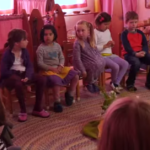
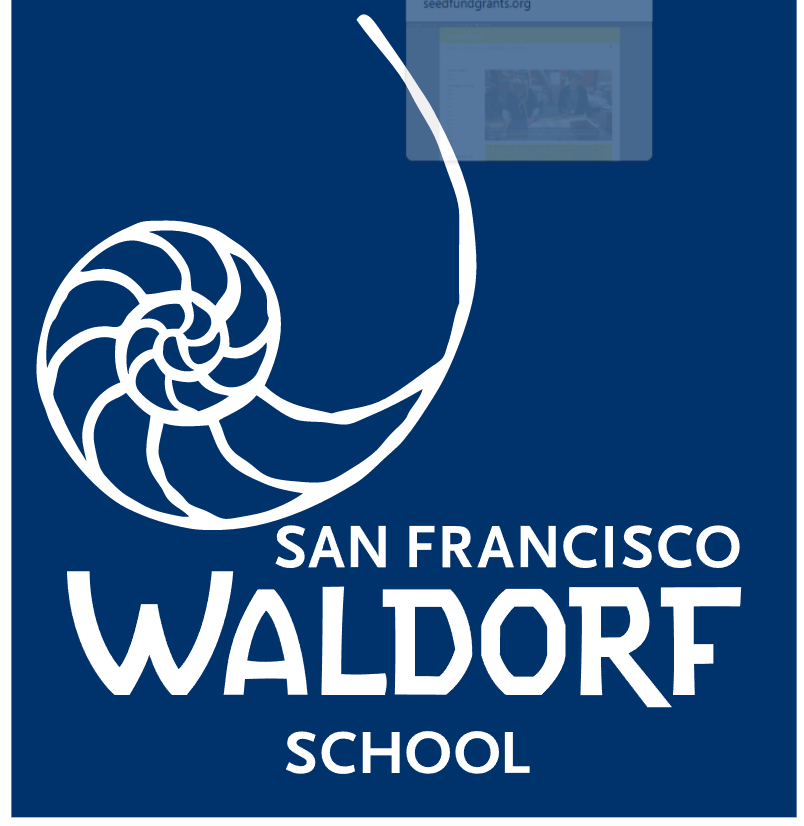
San Francisco Waldorf School
2018 - $34,000 Outdoor Classroom
2016 - $33,000 Outdoor Classroom
2015 - $5,000 Outdoor Classroom
2014 - $7,500 Outdoor Classroom
2013 - $10,000 Outdoor Classroom
2009 - $10,000 Biodynamic Garden Program
2008 - $6,000 Biodynamic Garden Program
2007 - $10,000 High School Capital Campaign
San Francisco Waldorf School is an independent, co-educational, non-sectarian school providing education from Kindergarten through Grade 12. SFWS was founded in 1979 as an independent school within the rich Waldorf tradition whose mission is to educate students using an approach that fosters independent thought and a sense of personal responsibility. The Waldorf curriculum, designed by Austrian philosopher and scientist Rudolf Steiner in 1919, is based on a thorough study of child development, so that the subjects taught meet not only the cognitive developmental needs of the students, but also their physical, emotional, and spiritual needs. There are over a thousand Waldorf schools around the world, each operating independently, but held together by a common understanding of human development and a recognition of the value of artistic work and meaningful social interaction.High School capital campaign
San Francisco Waldorf High School’s campus opened in September 2007. As the first school in San Francisco to be awarded the coveted LEED Gold certification, the overall goal of the project was to create an environment that is in harmony with the philosophy of Waldorf Education. Perhaps the greatest reflection of this success is the fact that the building itself will be incorporated into the curriculum as an educational resource for environmental studies. The principals of the Waldorf philosophy and the actual building serve as a teaching tool for students, demonstrating how to become actively involved in today’s social issues.Biodynamic Garden
The Waldorf School Biodynamic Garden was created to grow children's love for the earth, for meaningful labor, and for themselves and their community through infinitely fascinating work as farmers. Located at the Little Sisters of the Poor’s St. Anne’s home, the garden acts as a teaching tool, a healthy food source for the lunchroom and a social hub for the children as well as the residents of St. Anne’s. The participating students, kindergarten through third grade, are toured through the garden to taste what is in season and observe the garden’s changes before splitting up to participate in the upkeep of the garden. With tasks like planting apple trees, building compost and harvesting crops, every child is engaged with the garden directly, discovering the benefits of farming for themselves.Nature Program\The Waldorf School Nature Program creates an overarching program that serves as a model for other urban schools who aspire to “bring nature alive” for students, faculty and the entire community. The program brings younger children out into nature and older students the opportunity to learn more about regional biodiversity. This program will offer an ongoing educational series to facilitate community understanding and support. This series brings a wide variety of speakers to address topics that enhance understanding of environmental education, brought via lectures, workshops and events. The program's goal is to create awareness of issues and initiatives that are relevant in the San Francisco Bay Area.
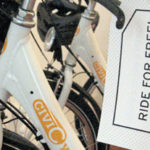

Southern Exposure
2015 - $10,000 General Support
2008 - $10,000 Vapor Exhibition
Located in San Francisco’s Mission District, Southern Exposure (SOEX) has been presenting a diverse, innovative, contemporary art, arts education, and related programs and events for over 34 years. SOEX reaches out to diverse audiences and serves as a forum and resource center to provide extraordinary support to the Bay Area's arts and educational communities. Activities range from exhibitions of local, regional, and international visual artists’ work, education programs, and lectures, panel discussions, and performances. Southern Exposure is dedicated to giving artists—whether they are exhibiting, curating, teaching, or learning—an opportunity to realize ideas for projects that may not otherwise find support.
The exhibition, Vapor, surveyed art, architecture and design that takes our declining air quality as the subject matter, medium and metaphor for creative work. Often inspired by forms of activism, the works reacted to the sources of climate change through the use of technologies – sensors, databases, and communications equipment – that were only recently accessible outside a lab. In this sense, the show's title also referred to the growing means by which this art is being produced, in addition to the ubiquity of greenhouse gases and other air conditions that serve as this art’s medium. Vapor proposed new ways of modeling, testing and finding solutions to the problems of air quality and greenhouse gas emissions.
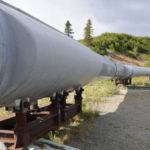
The Center for Land Use Interpretation

The Center for Land Use Interpretation
2008 - $5,000 Petroscape Program
The Center for Land Use Interpretation (CLUI) is a research and education organization interested in understanding the nature and extent of human interaction with the earth’s surface, and in finding new meanings in the intentional and incidental forms that we individually and collectively create. They believe that the man made landscape is a cultural inscription that can be read to better understand who we are, and what we are doing.
The organization was founded in 1994, and since that time it has produced dozens of exhibits on land use themes and regions, for public institutions all over the United States, as well as overseas. CLUI publishes books, conducts public tours, and offers information and research resources through its library, archive, and website.
Petroscape
Petrochemical products coat the surfaces that surround us, stuff the products we buy, build our food, move ourselves and our goods, and run the American machine. We all know that, yet we know so little about it. Improving the understanding of the physical form of this landscape, and its relationship to us, is the subject of this ongoing program.
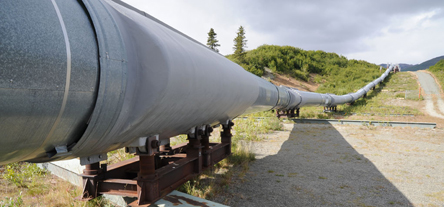
2008 - $5,000 Petroscape Program
The Center for Land Use Interpretation (CLUI) is a research and education organization interested in understanding the nature and extent of human interaction with the earth’s surface, and in finding new meanings in the intentional and incidental forms that we individually and collectively create. They believe that the man made landscape is a cultural inscription that can be read to better understand who we are, and what we are doing.
The organization was founded in 1994, and since that time it has produced dozens of exhibits on land use themes and regions, for public institutions all over the United States, as well as overseas. CLUI publishes books, conducts public tours, and offers information and research resources through its library, archive, and website.
Petroscape
Petrochemical products coat the surfaces that surround us, stuff the products we buy, build our food, move ourselves and our goods, and run the American machine. We all know that, yet we know so little about it. Improving the understanding of the physical form of this landscape, and its relationship to us, is the subject of this ongoing program.
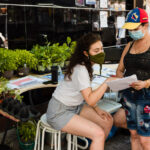
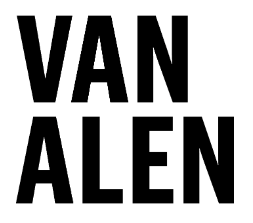
Van Alen Institute
2018 - $10,000 Climate Council
2011 - $5,000 Life at the Speed of Rail Publication
2009 - $10,000 Manhattan 2409
2008 - $5,000 David Benjamin and Soo-in Yang, Living City
Van Alen Institute is an independent nonprofit architectural organization that promotes inquiry into the processes that shape the design of the public realm.
For over a century, the Van Alen Institute has cultivated a fellowship of design practitioners and scholars, awarded excellence in design, and fostered dialogue about the evolving role of architecture in the public realm. The Institute’s community of fellows, members, participants and public audiences is an integral part of that dialogue, shaping and expanding our definition of ‘public architecture’ and its impact on contemporary civic life.
Living City: A Public Interface to Air Quality in New York
Living City is a full-scale prototype building skin designed to breathe in response to air quality. During their fellowship term, David Benjamin and Soo-in Yang developed one of the first architecture prototypes to link local responses in a building to a distributed network of sensors throughout the city. With Living City, Benjamin and Yang confront the air as the most public and politicized of spaces in the city—shared by all but invisible, often divisible, and intensely debated and controlled. Using New York City as a research lab, they propose an architecture that functions as a public interface to air quality, creating a platform for an ecology of building skins where individual buildings receive, share and respond to data as part of a collective network. For more information about Living City, visit www.thelivingcity.net.
Eric W. Sanderson, Manhattan 2409
Eric W. Sanderson’s Mannahatta project envisions the long-term future of Manhattan as an ecosystem in the context of its rich ecological and social history. Sanderson uses his extensive research and documentation of the diverse ecological landscapes of Mannahatta to reflect on where New York has come from and speculates on how sustainability can be built into the structure and practice of New York over the next 400 years. During his fellowship term at Van Alen Institute, Sanderson pursued the research and writing of a brief for a design competition on the future sustainability in New York City in stages approximately 50, 150 and 400 years from now, prompted by sustainable characteristics of Mannahatta. As part of this work, Sanderson shared the data resources and ecological concepts of the Mannahatta Project with the design community at large, and he organized a public roundtable with leading thinkers in urban sustainability and ecology to discuss and debate the ecological themes that Mannahatta raises in contrast to the city today.
Life at the Speed of Rail
How will high-speed rail change American life in the coming decades? This multimedia competition seeks the visions of the architectural design community, planners, graphic designers, artists—anyone who wants to contribute to the discussion surrounding high-speed rail. In this Call for Design Ideas, entrants are asked to produce projects and narratives picturing the wide-ranging impacts that a new transportation network will have on the nation’s communities, whether urban or rural, rail-riding or car-centric, heartland or borderland. By collecting these ideas and images of a transformed America—be they specific, pragmatic, or speculative—we’ll better understand the hopes and fears of our current moment and be better equipped to decide whether and how we build this new infrastructure.